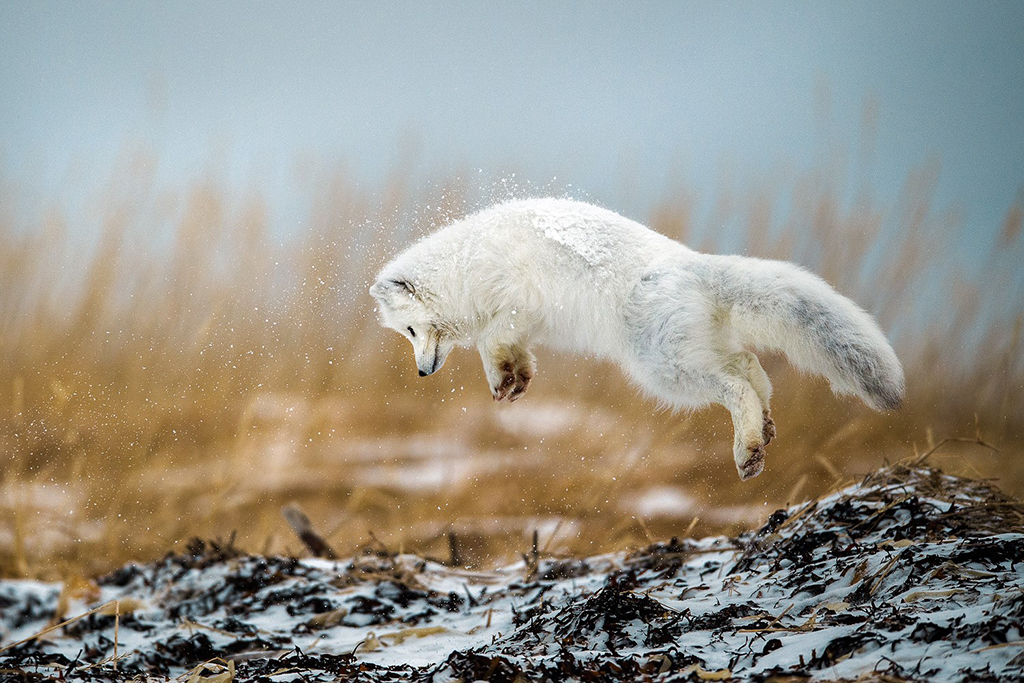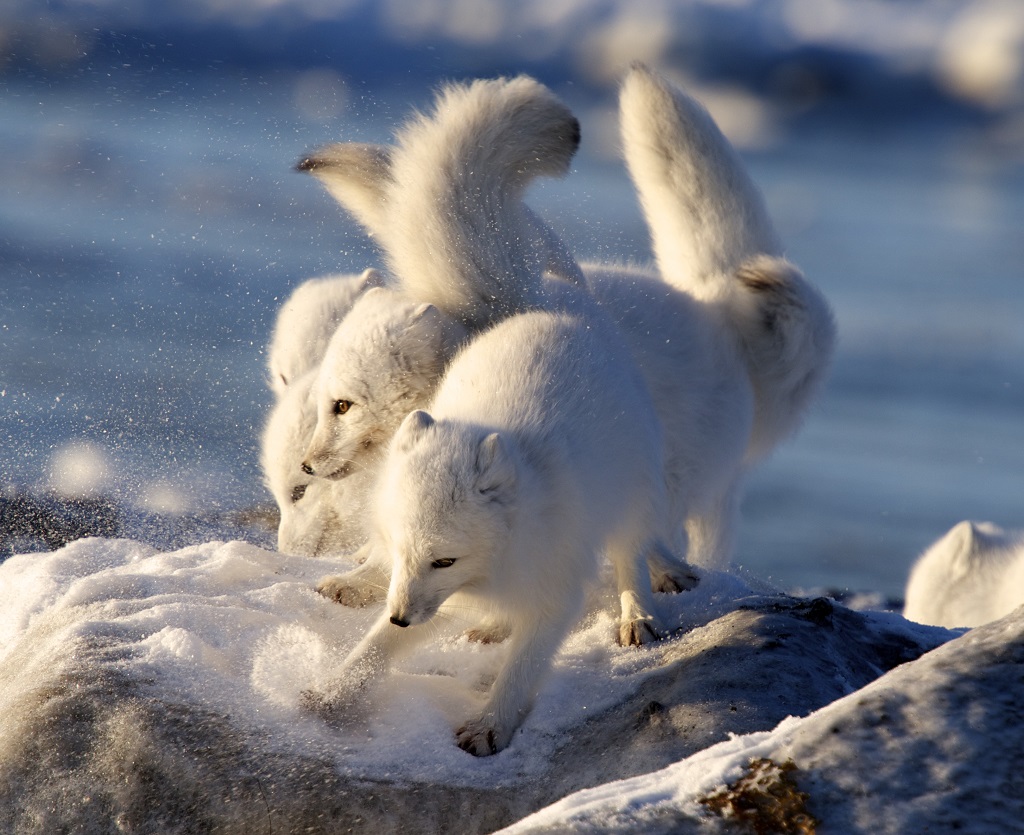Scientific name: Alopex lagopus
Average length/height: 45-91cm (18-36 inches), tail: up to 33 cm (13 inches)
Average weight: 2.7-4.5kg (6-10lbs)
Characteristics
Smallest in the fox family, their short features (legs, body, and ears) give them good protection in the winter. They molt twice a year, turning white in the winter and brown in the spring for better camouflage. It is possible to have a blue phase which remains a dark or charcoal coloured year-round. Lagopus means “rabbit footed” which refers to their paws covered in dense fur (ADF&G, n.d.). Their winter coat is so thick (approximately 20,000 hairs per sq. cm) it’s nearly impossible to see their skin. This dense coat means they’re able to survive temperatures of -70 degrees Celsius (-94 degrees Fahrenheit) (Davies, 2015).
Territory/Geographical Locations
An Arctic fox’s territory covers several hundred kilometers, particularly in the wintertime, as they follow other predators and scavenge for their leftovers. Arctic foxes are mostly found in tundra habitat, from Alaska to the far eastern borders of Canada and across the ocean to regions of Europe and Asia, giving them a circumpolar range.
Arctic fox dens attract the growth of plants of all kind, making them bioengineers of sorts. A tip for spotting them out on the tundra: look for places with increased willows, flowers and grasses.
Population & Reproduction
Arctic foxes don’t naturally have a long lifespan. They average three to six years old in the wild and 16 years in captivity. They are monogamous during mating season which takes place in early spring. The average gestation is between four and five weeks, resulting in a litter of five to eight kits. If food is scarce, they usually have smaller litters.
According to the World Wildlife Fund, the Arctic fox population makes up several hundred thousand globally and is considered a low concern in conservation efforts.
Diet
Like most foxes, they eat small mammals such as lemmings, mice and voles. They will eat eggs, sometimes daring to steal one from a cranky Canada goose) berries and nesting seabirds. They will also follow polar bears and wolves in hopes of scavenging the remains of their kills.










